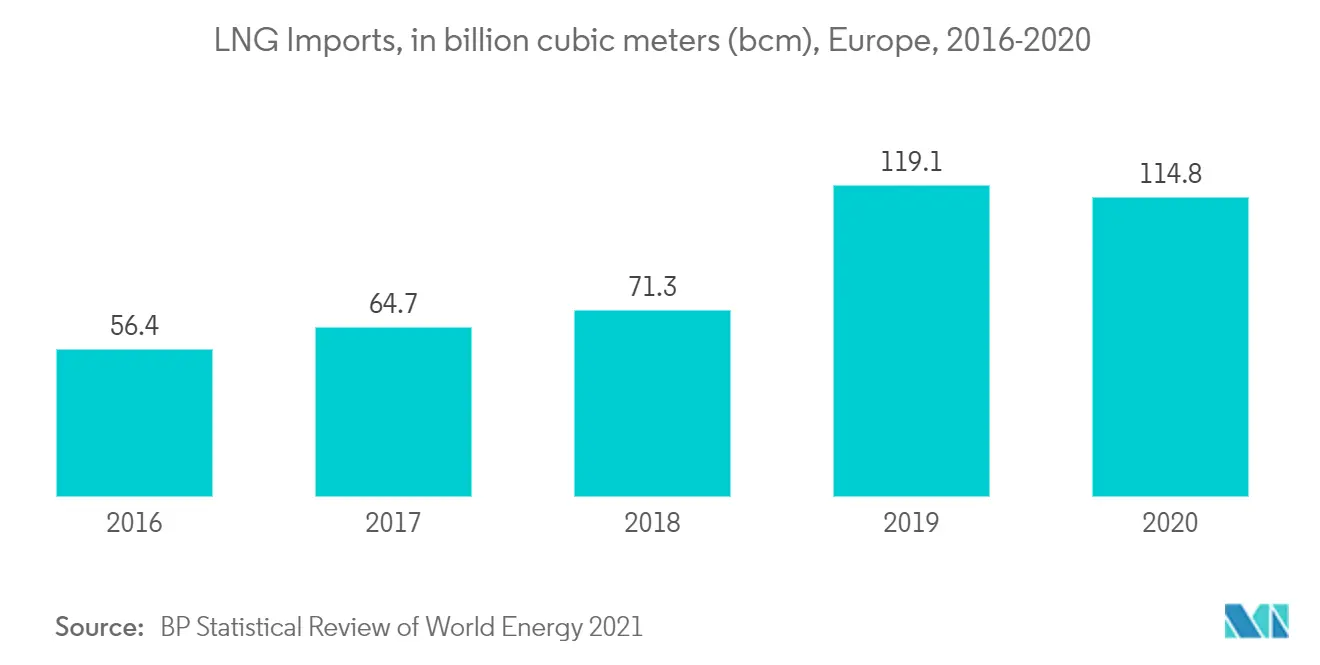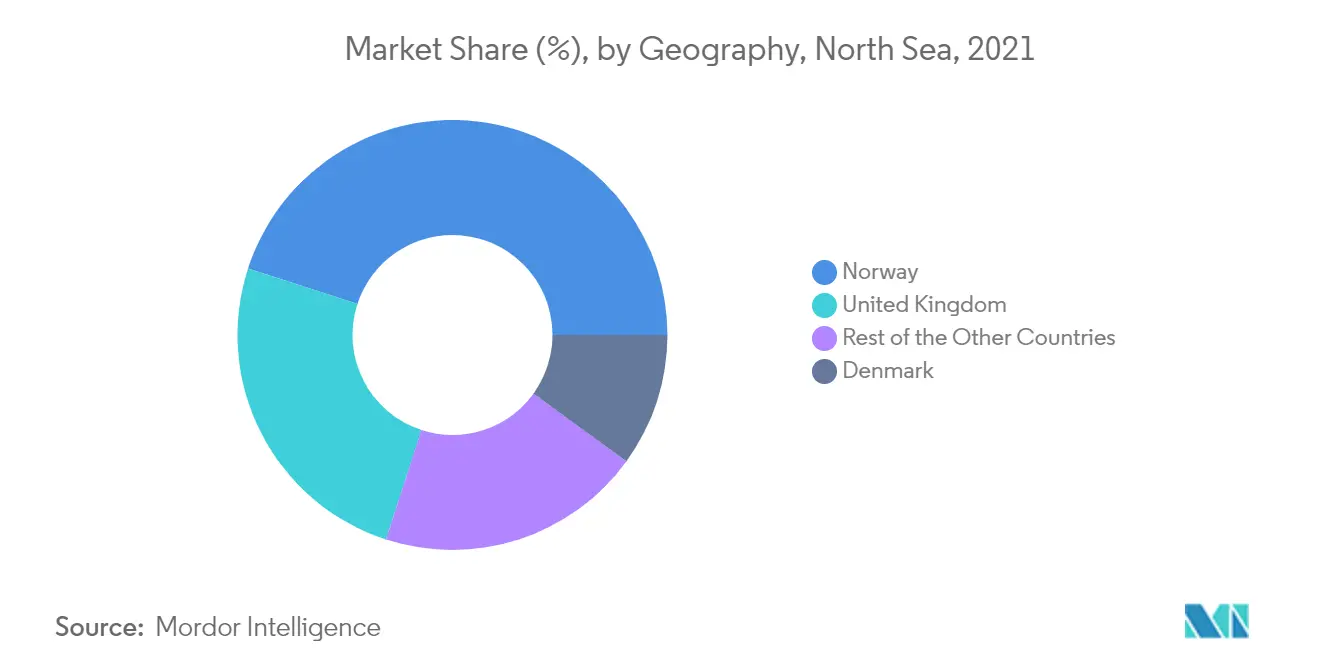Market Trends of North Sea Oil and Gas Industry
This section covers the major market trends shaping the North Sea Oil & Gas Market according to our research experts:
Increasing Investments in Gas Sector Expected to Drive the Market Demand
- European gas demand is expected to remain stable throughout the forecast period. In the power sector, the gradual phase-out of over 50 GW of nuclear, coal, and lignite-fired power generation capacity is likely to create demand for gas-fired power plants.
- In recent years, the European region witnessed a sharp rise in its LNG imports. In 2020, the region imported around 114.8 billion cubic meters (bcm) of LNG, which almost doubled from 56.4 bcm in 2016.
- In 2021, natural gas demand in the oil and gas industry is expected to recover to its pre-crisis levels and increase slightly across the European region during the forecast period.
- Therefore, in order to meet the demand and offset the production decline from maturing assets the investment in new oil & gas fields are being undertaken by the operator in the North Sea. These new project sanctions are likely to have a direct impact on increased drilling activity over the next three years, with more than 20 development wells associated with these projects.
- In July 2020, Equinor along with Source Energy AS and Wellesley Petroleum announced the discovery of gas and condensate on the Norwegian North Sea. Preliminary estimates put the proven reserves at between 3 and 10 million standard cubic meters of recoverable oil equivalent, which corresponds to 19-63 millions barrels. The gas produced would majorly be exported to meet the demand of other European nations.
- Furthermore, the development of Elgood Gas field in the United Kingdom is underway and the fields are expected to get its first gas in 2022. The new fields are likely to propel the North Sea oil & gas market during the forecast period.

Norway Expected to Dominate the Market
- Norway has witnessed a slowdown in oil & gas-related activities in recent years, mainly due to maturing oil and gas fields. The country has a vast oil & gas infrastructure ranging from oil & gas drilling and production platforms to pipeline networks. As of 2019, Norway is the third-largest exporter of natural gas in the world and supplies about 25% of the European Union gas demand.
- At the upstream front, oil and gas production in the country only comes from the offshore sector, while the onshore sector has a large number of processing facilities like oil terminals, gas processing plants, etc. All offshore oil and natural gas leasing and development activities in the country currently occurs in the North Sea. As of March 2021, there were around 14 active offshore rigs operating in Norway. On the Norwegian shelf, there were 12 concrete facilities (Heidrun A and Troll B are floating), 63 fixed steel facilities, and 20 steel floating facilities in operation. In addition, there are nearly 400 subsea installations.
- Investments in the oil and gas sector are responsible for about one-fifth of the total investments in the country's productive capital. As per the Norwegian Oil and Gas Association, significant investments were made in the exploration, field development, transport infrastructure, and onshore facilities in 2020. In 2020, the investments, excluding exploration, totaled around NOK 155 billion.
- Norway's part of the North Sea covers an area of 142,000 km2 and is the most extensively explored part of the Norwegian shelf. The North Sea is the area which produces most volumes of oil and gas in Norway with about 67 fields in production, as of March 2021. North Sea accounts for 18% of undiscovered hydrocarbon resources in Norway.
- Further, a total of 31 exploration wells spudded in 2020, and of the 14 discoveries, seven were in the North Sea and seven in the Norwegian Sea. Four new fields started production in 2020: Tora and Skogul in the North Sea, and Ærfugl and Dvalin in the Norwegian Sea. In addition, a large improved recovery project, Snorre Expansion in the North Sea was put into production by Equinor which is expected to drill 24 new wells, 13 producers, and 11 water-alternating gas injectors.
- Therefore, owing to the above points, Norway is likely to dominate the North Sea oil and gas market during the forecast period.


